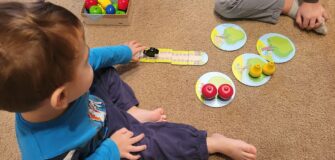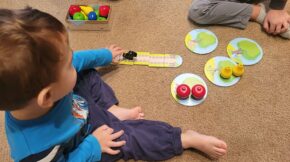How To Nourish Your Baby in the First Year [Nutrition Tips]
Share
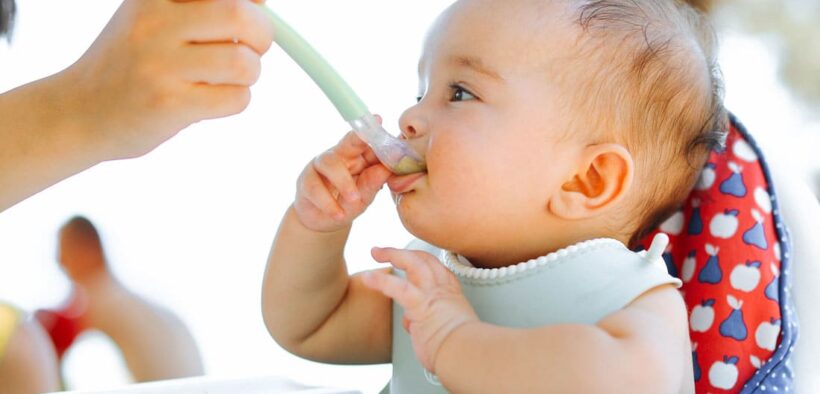
It doesn’t matter whether you are a new parent or have previous experience raising a kid. The first year of a child is nerve-wracking for all. Because this period is highly sensitive and requires the active attention of parents, nutrition is one great aspect of the first year of a child and can be quite stressful if you aren’t aware of the do’s and don’ts.
In this guide, we help you understand everything about your baby’s nutrition needs in the crucial first year. Read on.
The Importance of Baby’s Nutrition in the First Year
Nutrition is something that you will have to be careful about during many years of your child’s growth. But the first year is a critical period where a baby’s nutrition plays a major role in shaping their health and growth. From the time of the birth till the baby turns 1 year old, the needs of nutrition of the baby keep changing rapidly. It is important that your baby gets adequate amounts of nutrients so they can get the nourishment they need to develop their brains and body.
To help you understand the importance of your baby’s nutrition in the first year, we highlight the issues your baby may face owing to a lack of proper nourishment in the first year.
- If your child doesn’t receive the proper nutrients in the first year, then there are chances of an underdeveloped brain and body. During the first year, your child needs the required amount of minerals and vitamins that can help him/her grow to be healthy overall.
- FTT is a condition wherein the baby does not gain an adequate amount of weight, which is termed healthy for their age. A nutrient-deficient baby will grow up to become bony and small in structure. If they don’t receive the right amount of nutrients in their first year, they will have difficulty maintaining a healthy body weight later.
- Nutrients help a child build a safety net of immunity to fight and keep away common and severe diseases. If the baby’s nutrition is compromised in the first year, then they might fall sick more frequently and be susceptible to infections.
The Feeding Guide for Your Baby’s Nutrition in The First Year
A baby’s feeding plan in the first year is broken down into two periods. 1st is the 0-6 month period, and 2nd is the 6 to 12 months time frame. Let us understand them in detail below.
Baby’s Nutrition from Birth to 6 Months
What does a baby from birth to 6 months of age eat and drink?
1. Breast Milk
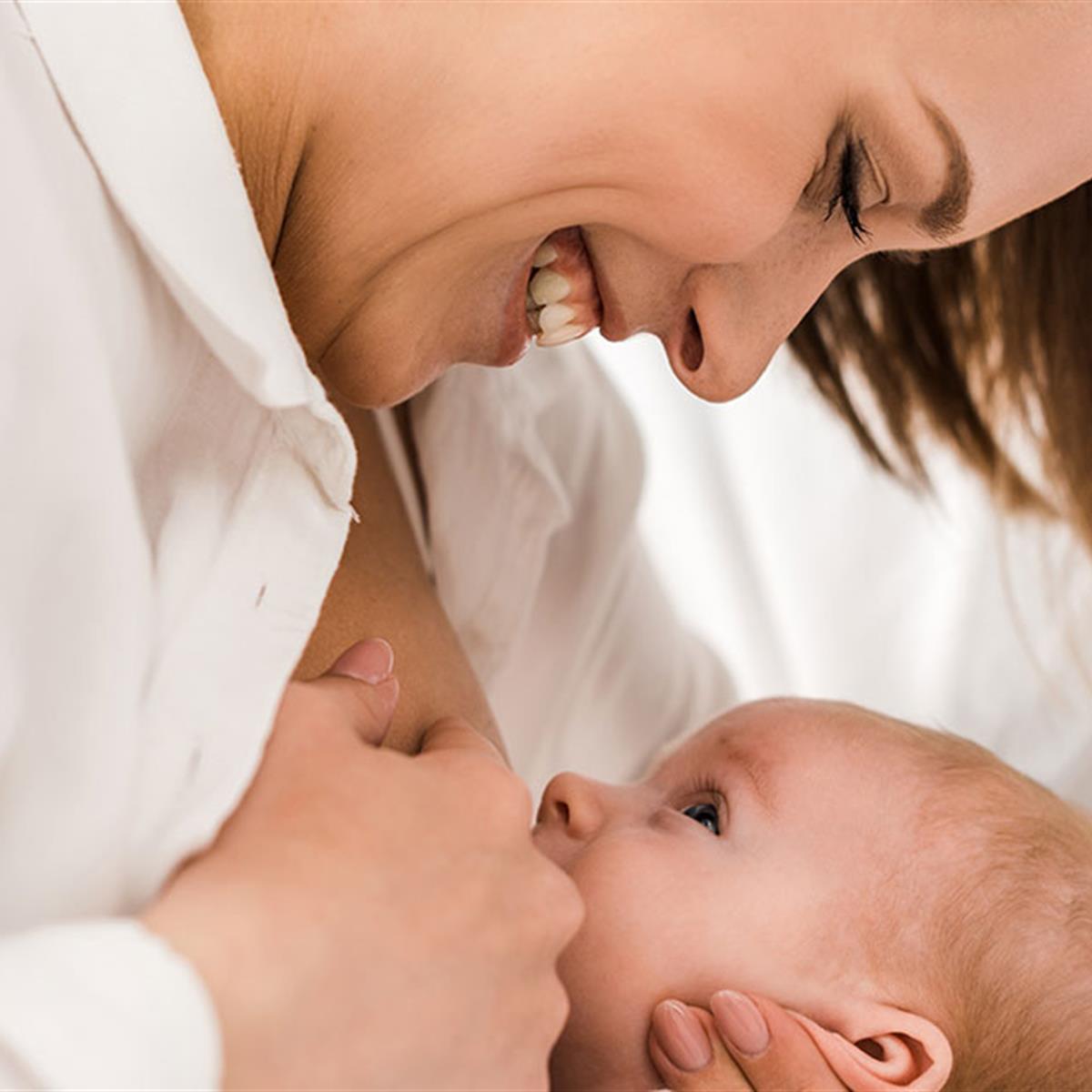
From the time a baby is born till they reach 6 months of age, the mother’s breast milk is the sole food they are dependent on. The baby cannot consume any solid food or any other liquid food apart from breast milk. A mother’s milk contains all the essential nutrients that a growing baby’s body needs. Breast milk has vitamins, proteins, fatty acids, and antibodies. If a child isn’t receiving breast milk in the 6 months after their birth, the child can develop severe health and growth issues.
2. Infant Formula
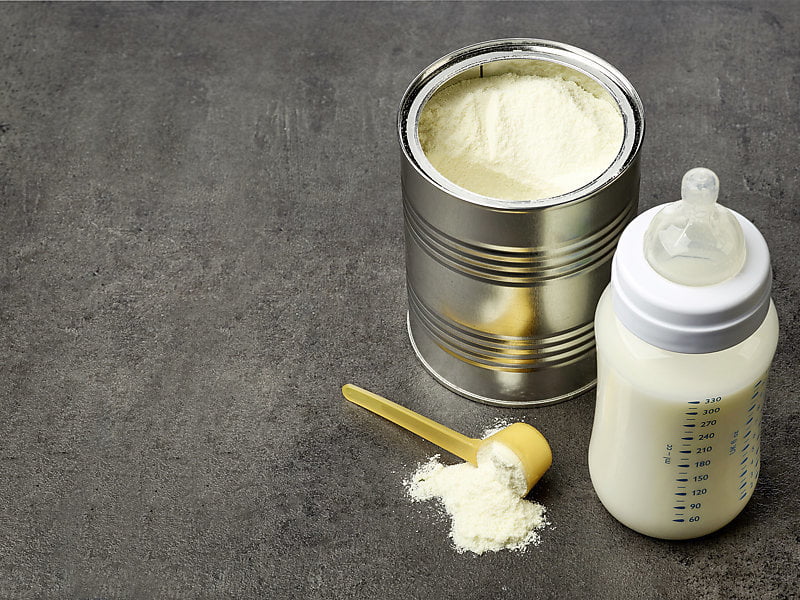
Infant formula is another food that a baby can consume in the initial 6 months. A mother can alternate between breastfeeding and feeding the baby infant formula. It is a powder formula that can be liquefied and fed to the newborn. It is filled with all the nutrients similar to the ones found in breast milk.
Baby’s Nutrition from 6 -12 Months
Here is a list of foods that a baby needs between the time frame of 6 to 12 months.
1. Breast Milk and Infant Formula

The food that was being fed from the time of birth till 6 months period needs to continue till the 12th month as new foods are being introduced. The baby is still learning about new foods but is familiar with breast milk and infant formula. So it is important to continue with these along with introducing new solid foods and drinks slowly.
2. Soft and Mashed Food
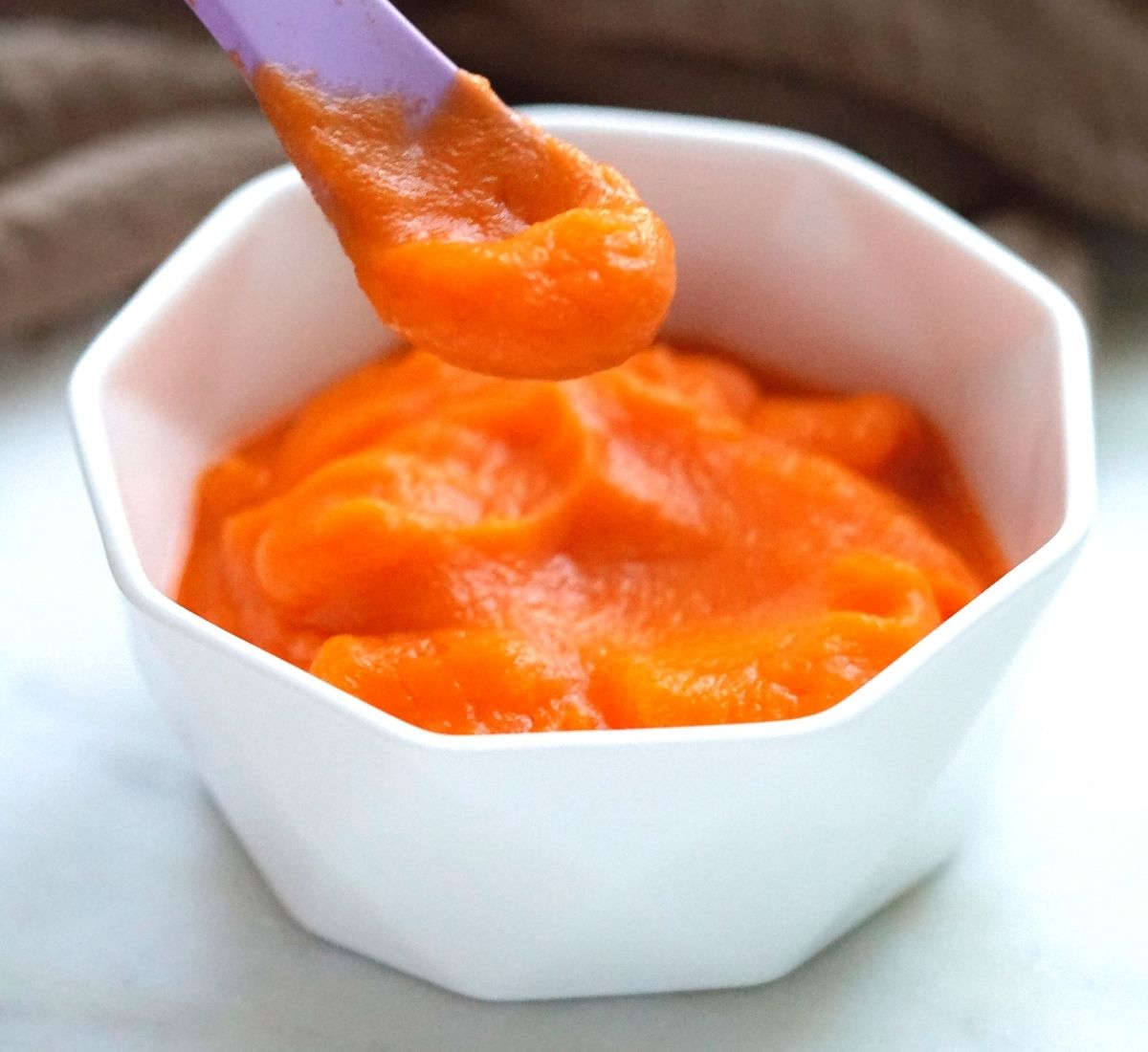
To help your kid transition from liquid foods to new foods, start by giving them small portions of chewy and mashed food. Try mashed potatoes, pureed carrots, and small pieces of fruits, vegetables, etc.
3. Small Amounts of Other Foods
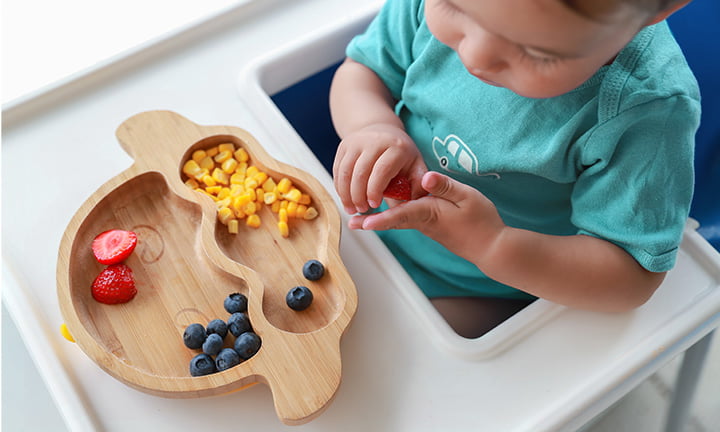
As your child grows accustomed to mashed potatoes, you can introduce all the other foods like eggs, bread, rice, meat, etc. Do not keep away any food, as your child is now ready to try a variety of new foods. But be sure to keep the portions to a minimum.
Things to Keep in Mind When Feeding Your Baby
Yourbaby’s nutritionshould come from natural foods. Do not add salt, sugar, or spices, as they may harm your child’s sensitive stomach.
- Give only natural and home-cooked food to your baby. Processed and packaged foods like chips, chocolates, and cookies are not suitable for your kid.
- Though eggs are recommended for a baby’s nutrition in the first year, uncooked eggs must be avoided as they may cause the growth of bacteria in the baby. Honey is also to be avoided for this reason.
- Everything you give to the infant has to be well-cooked and soft. So no hard and raw foods as they may cause choking.
- Only fresh water, breast milk, infant formula, and pasteurized milk are the beverages that are allowed for the baby. Any additive-laden packaged beverages are strictly to be avoided.
- Make sure to feed your baby with your hands, but occasionally let the baby feed itself. Offer a spoon and let the baby try to eat to make them able to start eating on their own.
- Try to have the meals together as a family to create a sense of togetherness and develop healthy eating habits in the baby.
- Understand your baby’s food interests. Give them more of the food they like and stop feeding them when they are full or appear sleepy and irritable.
What Nutrients to Give Your Baby in the First Year?
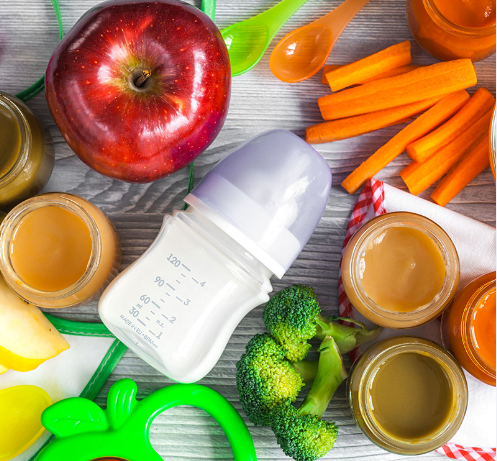
Breast milk has all the nutrients your baby needs, so you don’t have to worry about the baby’s nutrition till 6 months. But as your baby becomes 6 months and older, you need to give them solid food and other drinks. For that, it is important to note the nutrients that your baby needs to ensure they develop in the right manner. Below are the nutrients that your child’s first-year diet needs to include.
- Calcium is responsible for strong and healthy bones and teeth. A child from the time of 6 months to 1 year needs adequate amounts of calcium in the form of solid foods. Foods such as green vegetables like beans, spinach, peas, lentil soups, eggs, and fish are some of the calcium-rich foods that are essential for a baby’s nutrition in the first year.
- If you give calcium-rich foods and forget about vitamin D, the calcium from the food will find it difficult to get absorbed in the kid’s body. So along with calcium, vitamin D is an essential nutrient for your growing child. Vitamin D is present in foods like egg yolks, salmon, and fortified foods. Babies below 12 months of age require around 400 International Units of Vitamin D every day. If the requirement is not met, your kid might develop rickets which are characterized by soft and weak bones.
- A baby’s nutrition chart must include iron which helps the body carry red blood cells to the brain and also develop the brain’s functions. Babies aged 0-6 months require 0.27 mg of iron daily, while babies from 6- 12 months require 11 mg of iron every day. Till 6 months, the babies get their required amount of iron from an iron-rich mother’s breast milk and infant formula. After 6 months, they need to be fed more iron through food as their requirement for it increases. Iron-rich foods that can be given to infants are oatmeal, scrambled eggs, peas, meat, chicken, etc.
- Since your baby is in the rapid growth stage in their first year, they need foods that are rich in protein to help with tissue growth and repair. Yogurt, cheese, tofu, chicken, and beans are some of the foods that are rich in protein and can be given to your baby after 6 months.
- This calorie-rich nutrient is responsible for the formation of the brain and weight gain. There are different types of fat, and for kids in their first year, DHA is one of the most essential fats. DHA is an omega-3 fat that develops the brain and eyes. DHA is naturally found in fish, eggs, and milk.
How Much Should Your Baby Eat?

Infants are messy eaters. It is a challenge to make them eat properly to ensure they are receiving the right amount of nutrients. And that is where a concern, which as a parent, you might have about your kid, is whether they are eating enough. How to know when your baby has had enough food or needs more? Let’s break it down for you.
The Portion Sizes of a 6 to 8 Months Baby
Before this, your baby will typically be feeding on breast milk and formula. At 6 months to 8 months, the baby needs to be introduced to some solid foods.
- Start by adding one meal- typically pureed food or small portions of soft foods.
- Then add two meals – a combination of pureed and solid food or a combination of two pureed foods.
- If you were giving the child two pureed meals, you could now add pieces of fruits, vegetables, and grains.
- When giving a new food, always start with one or two teaspoons to let your baby get used to it before moving to larger portions.
- The portion sizes of each meal, including during breakfast and dinner, would be 4 tablespoons.
The Portion Sizes of an 8 to 12 Months Baby
At this age, your child is more open to eating solid food. Here’s what your baby’s nutrition should be like between 8 to 12 months.
- Introduce a third meal as a snack while continuing with breast milk and formula during the morning and afternoon.
- Let your baby explore different foods like finger foods, diced or minced food, etc.
- By this time, your baby will be eating most of their food themselves. So let them decide how much they want to eat.
- The typical amount of food for an 8 to 12 months baby is around 4 to 8 tablespoons.
Don’t be baffled by the small portion sizes. Your kid’s stomach is smaller, and they cannot eat more than a few tablespoons till the age of 1. This also means your baby will be eating more often.
Signs to Look for When Your Baby is Full
Armed with the knowledge of how many portions to feed your baby, you want to ensure the amount doesn’t exceed. This is a common mistake that happens because parents often worry their child isn’t eating enough despite the kid giving them a clear sign of being full. So here are the signs you need to look for that say that your child has had enough food for the time being.
- Feeling sleepy or tired – If your kid starts to appear tired or sleepy, it’s a clear indication that they have had enough food.
- Turning their head the other way – After eating a few mouthfuls, if your kid suddenly appears disinterested in another bite and turns their head away, it means it’s time to stop feeding them.
- Leaning back in their seat – A child often sits back in their chair, showing contentment of having eaten enough.
In a Nutshell
Nutrition plays a pivotal role in developing your baby’s body and organs. The first year is highly crucial as this is the time when your child is rapidly growing and needs the highest care and attention. Your baby’s nutrition, if done right, can give you the peace of mind that your baby is developing in a correct manner.
You can always consult an expert and guides like these to ensure you are feeding your baby the right food in the required quantities. It is best to create a feeding schedule and chart so you don’t miss out on the essentials of your baby’s nutrition.
We wish you all the best in giving your baby the best care. Happy parenting!








